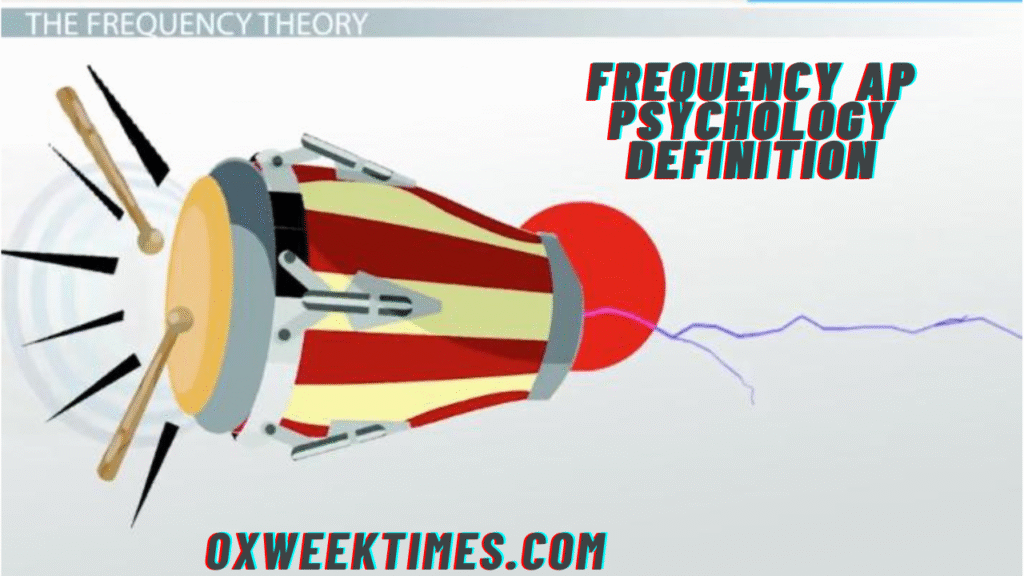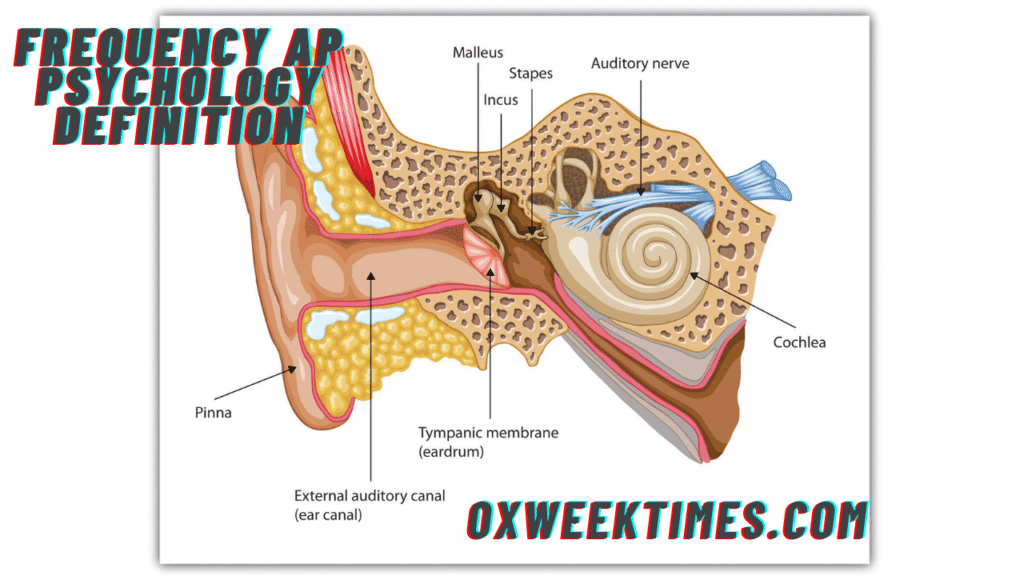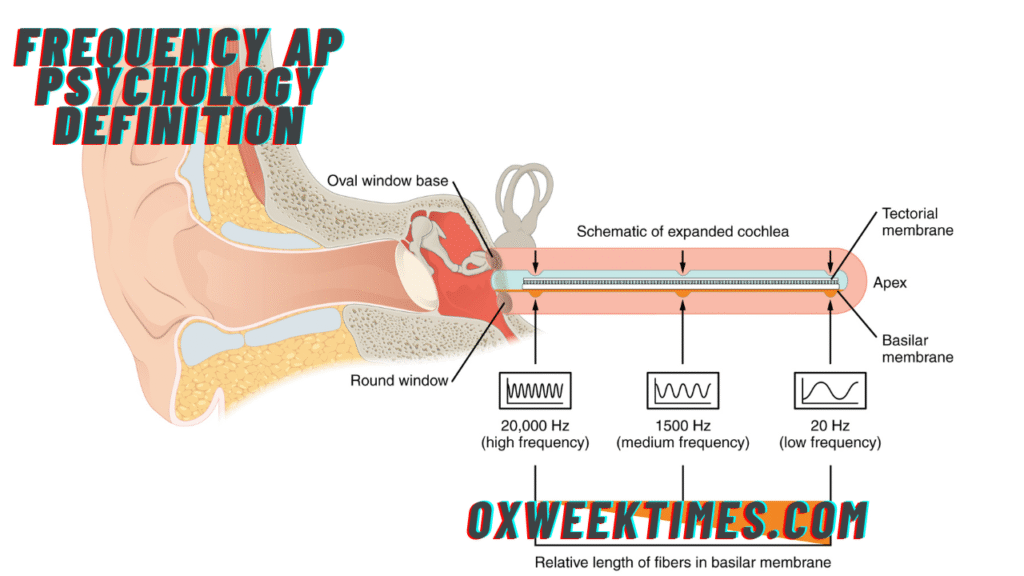
In the subject of psychology, particularly in the context of AP Psychology, several core principles assist students appreciate the way our brains process, perceive, and react to the environment. One such essential idea is “frequency”—a phrase that arises not just in biological psychology but also in sensation, perception, learning, and cognitive psychology. Understanding the frequency AP Psychology definition is key for acing the AP Psychology test and having a better knowledge of how people perceive their surroundings.
This article will explore the frequency AP Psychology definition in depth, including its meaning, usage, theoretical background, relevance to other psychological principles, and why it matters in the study of the human mind and behavior.
What Is the Frequency AP Psychology Definition??

The frequency AP Psychology definition refers to how often a stimulus or behavior occurs over a specific period of time. In various contexts within psychology, frequency can have slightly different meanings, but at its core, it describes repetition, rate, or occurrence. Most commonly, the term is used in areas such as sound perception (auditory processing), classical and operant conditioning (behavioral psychology), and statistical analysis of behavior.
In sensation and perception, for example, frequency refers to the number of sound wave cycles that occur per second, measured in Hertz (Hz). This influences pitch—the greater the frequency, the higher the pitch. In contrast, in behavioral psychology, frequency typically refers to how often an action is repeated, which is significant in learning theories such as reinforcement schedules in operant conditioning.
So, the frequency AP Psychology definition is contextual and must be understood in relation to the topic being discussed—be it sensory systems or behavior patterns.
Frequency in Sensation and Perception

In the unit on sensation and perception, frequency takes on a more physiological and physical significance. When addressing hearing, for example, frequency is a fundamental component of how we perceive sounds. Sound waves have both amplitude (which determines loudness) and frequency (which determines pitch).
- High-frequency sound waves are perceived as high-pitched sounds.
- Low-frequency sound waves are perceived as low-pitched sounds.
This part of the frequency AP Psychology definition is grounded in physics and neuroscience. The basilar membrane inside the cochlea of the inner ear responds differently to varying frequencies of sound. High frequencies activate hair cells at one end of the cochlea, and low frequencies activate those at the opposite end. This tonotopic organization helps the brain differentiate between different pitches.
This concept is not only relevant to understanding how we hear, but also forms the basis for treatments in cases of hearing loss and the design of technologies like cochlear implants.
Frequency in Behavioral Psychology

In learning and behavior, especially within the study of operant conditioning, the term “frequency” shifts from a physical measurement to a behavioral metric. In this context, frequency refers to how often a behavior occurs.
For example:
- If a student studies five times a week, the frequency of their study behavior is five.
- If a rat presses a lever 10 times in a minute to receive a food pellet, the frequency of lever-pressing is 10 per minute.
This application of the frequency AP Psychology definition is especially important in behavior modification, therapy, and experimental psychology. The idea is that reinforcement (positive or negative) can be used to increase the frequency of a desired behavior, while punishment can decrease it.
Schedules of reinforcement (fixed-ratio, variable-ratio, fixed-interval, variable-interval) are all based on the frequency and timing of rewards and consequences. The frequency of reinforcement greatly affects how quickly and how strongly behaviors are learned and maintained.
Frequency and Classical Conditioning
In classical conditioning, a learning process discovered by Ivan Pavlov, frequency also plays a role, although more subtly than in operant conditioning. In this case, the frequency with which a neutral stimulus is paired with an unconditioned stimulus can determine how quickly an organism forms an association between the two.
For example:
- A bell (neutral stimulus) is paired with food (unconditioned stimulus).
- If this pairing happens repeatedly (high frequency), the dog learns to salivate at the sound of the bell alone (conditioned response).
In this context, frequency influences the strength and speed of learning—a critical idea in understanding associative learning and memory formation.
Frequency in Cognitive Psychology and Memory
Though less prominent, frequency also appears in discussions of memory and cognition. According to research on encoding and retrieval, people are more likely to remember information that they encounter more frequently.
The frequency effect suggests that repetition increases the likelihood of memory retention. For example:
- A word seen 20 times is more likely to be recalled than one seen only once.
- Advertisers rely on this principle to increase brand recall.
Thus, in cognitive psychology, frequency affects how information is stored, processed, and retrieved in the brain. Understanding this aspect of the frequency AP Psychology definition helps explain phenomena like the spacing effect and distributed practice in learning and education.
Statistical Applications of Frequency in Psychology
Frequency is also a statistical concept in psychology. When conducting psychological research or assessments, psychologists often examine the frequency distribution of data.
For instance:
- How frequently does a specific behavior occur in a population?
- What is the frequency of a particular response on a survey?
This is essential in fields like psychometrics, developmental psychology, and clinical psychology, where data interpretation guides decisions about diagnosis, intervention, or theory development.
Frequency distributions are visualized using histograms, bar graphs, or frequency tables, and help psychologists understand patterns, central tendencies, and variability in human behavior.
Why Is the Frequency AP Psychology Definition Important??
The frequency AP Psychology definition is crucial for several reasons:
- Exam Relevance: AP Psychology exams often include questions about sound waves, learning theories, and experimental methods, all of which may require a clear understanding of frequency.
- Conceptual Clarity: Frequency connects different psychological domains, from biology to behaviorism to cognition, helping students see the interdisciplinary nature of psychology.
- Real-World Application: Understanding frequency helps in real-world situations—how we learn, how we perceive our surroundings, and how behaviors are measured and modified.
- Research Literacy: It supports students’ ability to interpret psychological studies, many of which use frequency data to support findings.
Conclusion: Mastering the Frequency AP Psychology Definition for Academic and Practical Success
To master psychology at both academic and practical levels, students must deeply understand core concepts, and frequency is one of them. Whether it’s in sound perception, behavioral reinforcement, learning theory, or data analysis, the frequency AP Psychology definition plays a pivotal role.
Recognizing that the same term can have multiple but related meanings across topics reinforces the importance of contextual learning in AP Psychology. This concept not only bridges the gap between theory and practice but also allows for a richer understanding of the human experience.
So, whether you’re preparing for your AP exam or seeking to apply psychological principles in the real world, having a firm grasp of the frequency AP Psychology definition will serve as a valuable intellectual tool.




